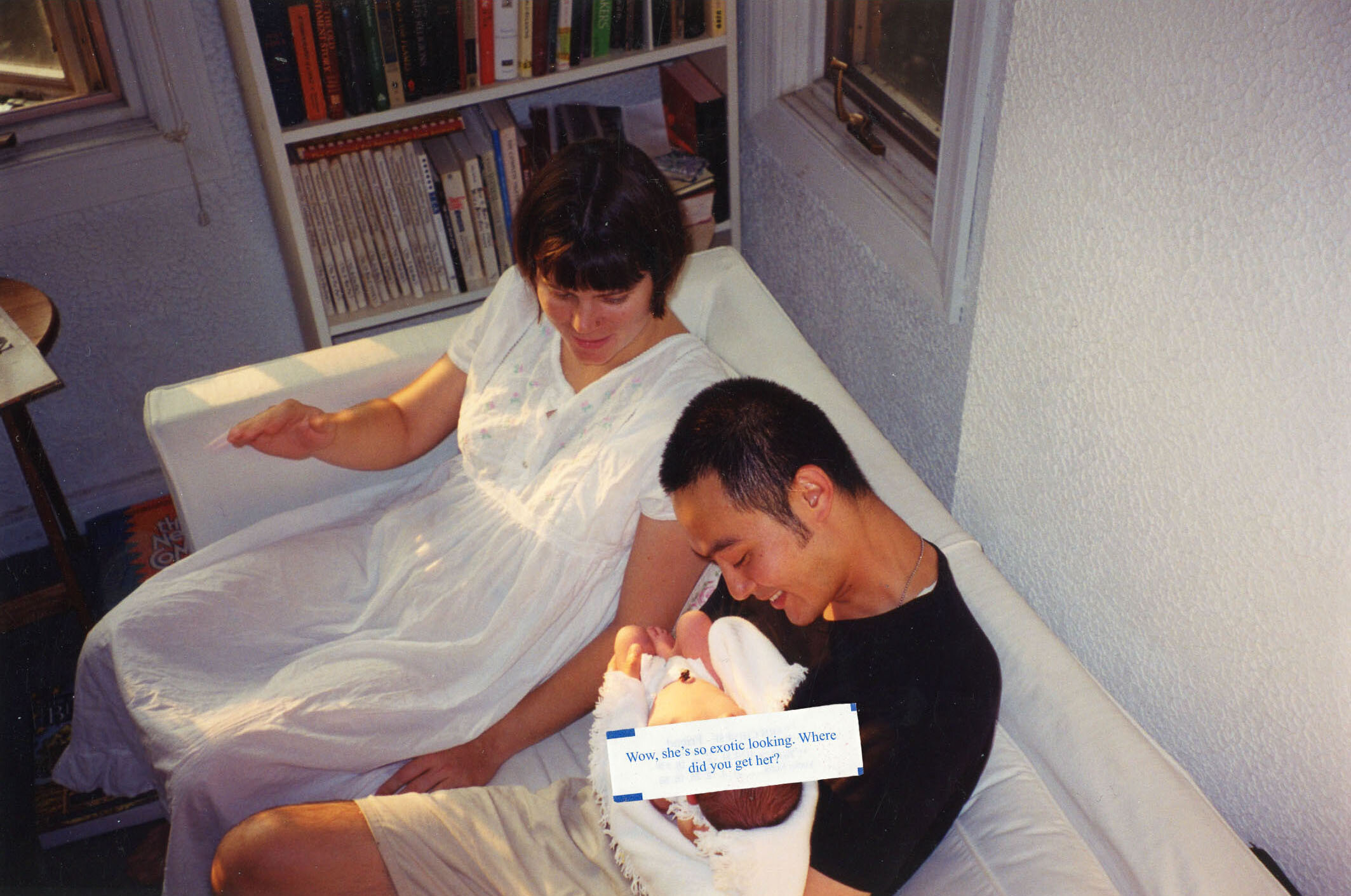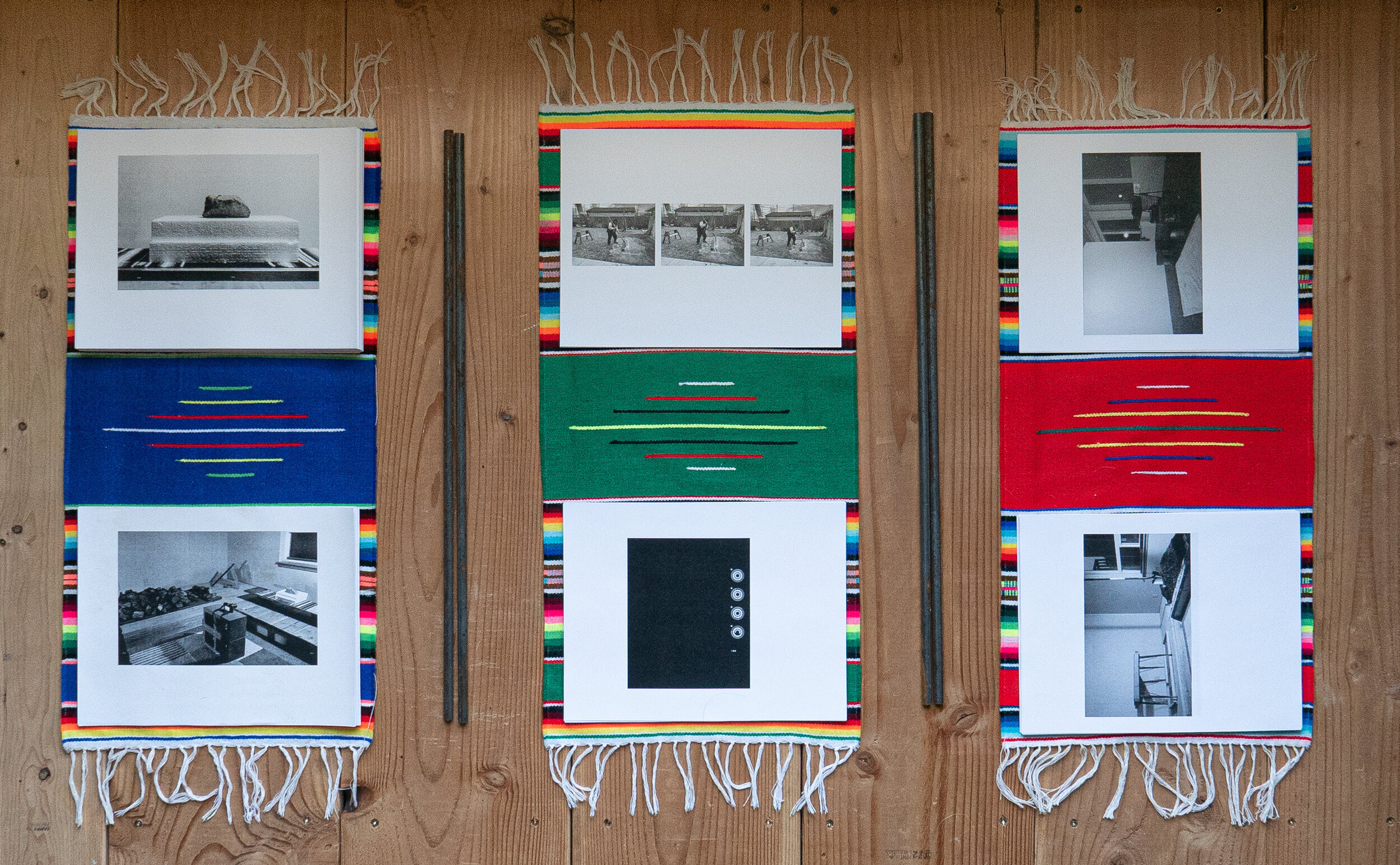New Photography from the Pacific Northwest
July 31 - August 14, 2020 | Virtual exhibition hosted by Melanie Flood Projects, Portland, OR
Artists:
Rydel Cerezo | Cristal Tappan | Mikai Arion | Emma Ray-Wong | Stefan Gonzales | M Prull | Ricardo Nagaoka
Click on artist name to view each virtual solo exhibition
Overview:
This exhibition stemmed from our mutual curiosity about emerging photography made in the Pacific Northwest. Our research began in the early days of the COVID-19 pandemic, and concluded at the start of a major social upheaval in support of the Black Lives Matter movement and against police brutality. These historical realities informed many of the conversations we had with the artists during our studio visits, ultimately becoming an inextricable part of our final selections. These deeply intimate bodies of work include reflections on personal identity, the complex experience of sheltering in place, negotiating family dynamics, shifting access to work, and the reality of being an emerging artist in a post-pandemic world.
Yaelle Amir and Melanie Flood, Exhibition curators







Artist statements:
(in alphabetical order)
Mikai Arion:
Mustard, 2020 is a representation of rest and solitude comprised of eight photographic stills captured by writer and director, Mikai Arion on the production set of her cinematic short story entitled Mustard Greens. These stills erupt freedom and what this may represent for Black people. To look at these photos and imagine oneself in the spaces depicted, with the characters/Black people illustrated, is an act of harvesting said freedom. Or at the very least, it is an act of beginning to plant the seeds of it in the body, heart, and mind. Mustard seeks to invoke mindful breath and through this breathing for audience members, specifically Black, to rest and recuperate as a form of healing. With each photograph Mikai asks onlookers to, breathe in life... and out all that seeks to destroy it.
Mikai Arion is storyteller creating work about race and gender identity, historical geography, environmental ontology, and social paradigm. With a focus in filmmaking and writing, she articulates intense commentaries about her socio-political concerns that manifest through her visual creations. Centering on her experiences as a Black American woman, she intends to present alternate realities that persist in the minds of those who interact with her work. Born and raised in Oakland, CA Mikai is now based in Portland, Oregon.
Rydel Cerezo:
Back of My Hand is a work based on observation and relooking. Quarantined in a family home sheltering three generations, this idiom is brought in as a means to not only take an introspective look at personal knowledge and the body but also to those closest to me. Covid-19 created a vacuum of time and space that unveiled the changes of bodies and relationships of my family members as well as the way this pandemic has affected each of them uniquely. I am interested in the second guessing of my knowledge of my family, the slow labour it requires to unlearn and the physical intimacy I share with them. It is through tender moments found within grooming, prayer and boredom that uncertainty is reimagined with hope.
Rydel Cerezo is a Philippine born visual artist working in Vancouver, Canada. His work investigates the space between sexuality, religion and race. He has exhibited internationally at Aperture Foundation (New York), Photo Vogue Italia Festival (Milan) and was the first-runner up for the Lind Prize facilitated by the Polygon Gallery (Vancouver). Cerezo holds a BFA from Emily Carr University of Arts and Design.
STEFAN GONZALES:
The Archive. The Catalogue, The Library, The Cloud. A collection of Data at rest.
History, however; is always in motion. It is by definition: in a state of constant flux. Therefor the Archive is also in a constant flux.
The Archive is vulnerable. This vulnerability comes from those who are in the position of the archiver. The archiver, like many of us, is also in a state of flux.
What falls through the cracks of the Archive? What gets repeated in the Archive? What gets shuffled to the front and what gets buried beneath the stones of history?
The archiver is the gatekeeper of these questions. If the archiver is over worked what will they forget in their weary haze? If the archivers bias (subconscious or not) is allowed to surface what will this do to the state of the Archive? If the archiver is high, if they are drunk, if they are distracted. What bits of the archive will they repeat? What bits will they forget to archive all together?
There is hope with this vulnerability. This allows up to pick up the pieces and fill in the holes. This state of constant flux allows anyone to be the archiver. We are responsible for maintaining our histories. This vulnerability allows Anyone to disrupt the Archive. We must protect the Archive from those who wish to poison it. We cannot allow those whose histories are at risk to fall through the cracks, and we must not allow our darkest histories to be forgotten. We must archive them in their entirety. Only then can we learn from them and use the Archive to its fullest potential.
The politics of my work is in a constant flux. Maybe this is because my own identity is in a constant flux or maybe it is because the rapid movement and accumulation of information keeps one in a constant state of questioning. I am Prio / Manso / Tiwa, a collage of colonization. I am a trans/non-binary individual. My practice centers around decolonizing Art and its institutions. This effort is backed by my position as an arts educator, set out to leverage radical pedagogy as a tool of decolonization. I grew up in Colorado where I eventually moved to Seattle, Washington to attend Cornish College of the Arts to receive Undergraduate degree followed by my attendance at the University of Washington where I completed my MFA in Photomedia and currently maintain a position as an instructor of record.
Ricardo Nagaoka:
What is to be an Asian male? In the erasure of our presence in images, representation is the subversion; to be seen, gazed upon, ponder on the presence of masculinity in our bodies. As we deconstruct masculinity for its toxicity and hegemony, what will images of male-identifying individuals hold for the future? My interests lie in this place of uncertainty, where I am attempting to rebuild the intentions and portrayals of masculinity. These are friends, strangers, and muses, photographed in the intimacies of their homes, inviting and denying the gaze of the viewer as the image pleases. In this space, there are no absolutes, only the persistent questioning of the power in images.
Ricardo Nagaoka is a Japanese-Latino photographer, born and raised in Paraguay. He landed in the U.S to study at the Rhode Island School of Design and has stayed ever since. He currently lives and works in Portland, OR. Growing up as an East Asian individual in a Latin American country insisted on him to define his own agency, challenging his cultural and familial identities from a young age. He finds an urgency in questioning the tendency to frame social issues through their surfaces, where the unseen is often pushed aside for the immediately visible.
M PRULL:
In mid-February, I began taking testosterone to treat diagnosed gender dysphoria. Shortly after beginning hormone replacement therapy, the COVID-19 pandemic forced me and much of my community to distance ourselves from each other, and my support network changed dramatically. It was much harder to have the kind of in-person connection with other transgender people I had expected to rely on as I began to see changes both internally and externally. Dissolve and Disintegrate is a response to these changes, which I have had to process mostly independently. Taking photos of my body and layering them as I see changes allows me to process the little things (peach fuzz, subtle body fat redistribution, greasier skin) and the big things (an inability to cry, passing versus not passing, male privilege). The photo transfer process used to put these photographs onto canvas is imperfect, and inevitably leaves gaps and holes in the image. To me, this reflects the imperfect nature of being. In these gaps, I apply gold leaf: even in the imperfections of self, in the hard places, there is beauty and value.
M Prull is a multimedia artist using photography to explore transgender bodies and identities. His practice asks the question: what if the depiction of transgender identities could be met with empathy instead of objectification? His self-portraiture creates a new visual vocabulary to describe how it feels and what it means to be transgender. He celebrates discomfort and dysphoria right alongside trans joy, and portrays his trans identity as a multifaceted, complex and sacred experience. His work has been shown locally in Portland, Oregon, where he lives and works.
Emma Ray-Wong:
My work uses photography to discuss themes of race, identity, family, history, and how these themes intersect. Self-portraiture plays an important role in the way I engage in art making, as I examine my own identity as a “mixed race” Chinese American woman and how that identity plays into these greater themes. Themes that I have frequented so far include caricatures of racialized and gendered stereotypes and the recreation or re-examination of my own familial history. I use photography to discuss my own relationship with these subjects and how my experiences play into the greater societal contexts of race and identity.
Emma Ray-Wong is an artist based in Portland, Oregon. She recently acquired her Bachelors Degree in Studio Art with a concentration in Photography from Lewis and Clark College. While she has experience working in multiple mediums, her main medium is film photography.
Cristal Tappan:
She Wanted to Be Called Mary explores the confines of feminine roles, mothers as individuals, and the complex relationships between mothers and their daughters. I focused on the relationship between my mother and I by creating images that illustrate her character loosely based on memories of her that have stayed with me. My mother’s identity is so closely tied to being a mother and a wife that she could never exercise her identity as an individual. This body of work originally began as an analysis of our relationship as mother and daughter and was meant to serve as a catalyst for reconciling my feelings towards her. As this project progressed it has evolved to include an exploration of my mother as an individual outside the context of motherhood and expresses the confinement she felt within her feminine role. Each individual scene was slowly crafted with the 4x5 camera, which requires additional diligence and intention. This calculated and meticulous process is an echo of the process my mother used when constructing her own image. She Wanted to Be Called Mary allowed me to see myself in my mother’s likeness and draw parallels between our lives that I have struggled to acknowledge. As a result, my frustration with her has dissipated and I have made space for an elevated connection, empathy, and understanding of her.
Cristal Tappan was born in 1990 in Los Angeles and grew up between San Luis Obispo, California and Prescott, Arizona. In 2020 she received her BFA in photography at Pacific Northwest College of Art in Portland, Oregon, where she currently resides. Tappan has been included in various exhibitions including “Cowardice” at Wicked Step Gallery in San Luis Obispo, California and “Blue Sky's Pacific Northwest Photography Drawers” at Blue Sky Gallery in Portland, Oregon. Her work has received numerous awards, such as first place in the juried Harold J Miossi Art Gallery Student Exhibition and honorable mention.